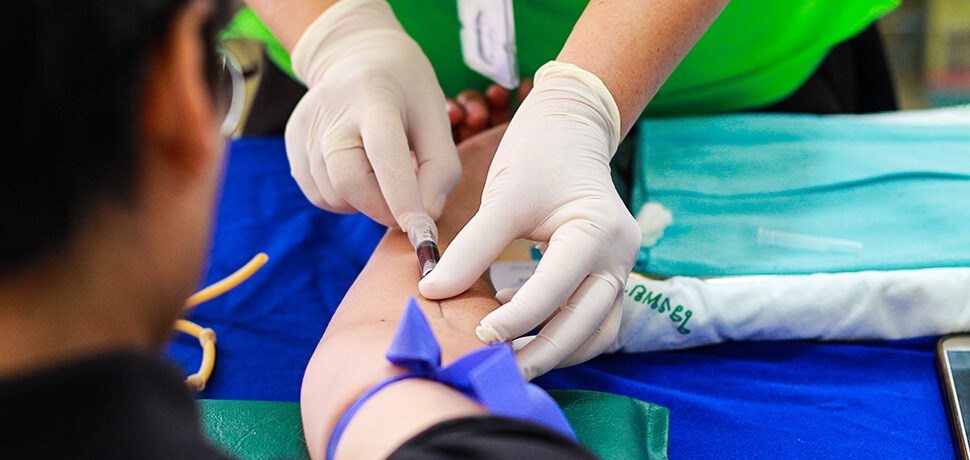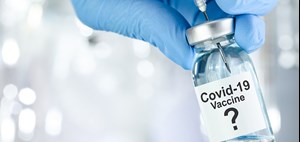Prescribed Minimum Benefits (PMBs) & How they Relate to COVID-19
In the past few months, life as we know it has changed in ways none of us could possibly have anticipated. And this is probably the most daunting aspect of all: the unpredictability of it.
To try and provide some level of certainty to medical scheme members, the Council of Medical Schemes (CMS) announced that COVID-19 had been classified as a Prescribed Minimum Benefit or PMB.
With Covid-19 being classified as a PMB, what are the benefits to you as a medical aid member?
To start with, it’s important to understand what a PMB actually is.
All registered South African Medical Schemes need to cover PMBs across their entire plan range, meaning that all members have access to these benefits, irrespective of their chosen plan type. This obligation is legislated (made law) in terms of the Medical Schemes Act No. 131 of 1998.
PMBs are a basket of benefits which ensure that, regardless of your health or age, every medical scheme member is treated equally and has a safety net to access a basic level of healthcare.
Medical schemes have to cover the costs related to this PMB basket of benefits, which includes the diagnosis, treatment and ongoing care for:
When deciding whether a condition is a PMB, the doctor should only consider the symptoms - this approach is what is called ‘diagnosis-based’. Once the diagnosis has been made, the appropriate treatment and care is decided upon, as well as where the patient should receive that treatment (at a hospital, as an outpatient, or in a doctor's rooms).
Why are Diagnosis Treatment Pairs (DTPs) important?
A DTP links a specific diagnosis to a treatment protocol and so broadly indicates how each of these PMB conditions should be treated. The treatment and care of PMB conditions should be based on healthcare that has proven to work best, taking affordability into account too.
The DTP protocols include the medications, types of tests, investigations and number of consultations for each chronic condition in the PMB basket. DTP protocols are therefore a way of providing the minimum benefits that should be covered by your medical scheme.
In order to fully understand PMBs, there are specific concepts and terminology that you need to understand:
- What are emergency medical conditions?
An emergency medical condition means the sudden and unexpected onset of a health condition that requires immediate medical treatment and/or an operation. If the treatment isn’t provided, the emergency could result in weakened bodily functions, serious and lasting damage to organs, limbs or other body parts, or even death.
In an emergency, it’s not always possible to diagnose the condition before admitting the patient for treatment. However, if a doctor suspects that the patient suffers from a condition that is covered by PMBs, the medical scheme must approve treatment. Schemes may request that the diagnosis be confirmed with supporting evidence within a reasonable time period.
- Which chronic diseases are covered?
The Chronic Disease List (CDL) confirms the list of 25 chronic conditions and the corresponding treatment protocols and medication formulary - this can all be accessed on the CMS website[i].
To avoid having to make a co-payment, members need to adhere to the medical scheme’s prescribed basket of benefits, for each of the PMB chronic conditions. Your scheme will confirm:
- which specialists or provider network to use (Designated Service Provider or DSP)
- the various tests (e.g. pathology test or radiology) you have access to
- the benefit frequency i.e. how often you can consult your provider
- the medication formulary, which is a restricted list of drugs approved by the medical scheme per chronic condition.
Why are Designated Service Providers (DSPs) important?
A DSP is a medical scheme’s first choice of healthcare provider (doctor, pharmacist, hospital, etc) when scheme members need diagnosis, treatment or care for PMB conditions.
If you choose not to use your scheme’s DSP, you may be responsible for a portion of the cost, in the form of a co-payment. This co-payment could either be a percentage of the cost, or the difference between the DSP’s tariff and what the provider actually charged.
Medical schemes have to ensure the following in terms of selecting a DSP:
- that it’s accessible within reasonable distance of a member’s work or home
- that it can deliver the services needed, and within a reasonable time period
Where the above criteria are not met, the medical scheme remains liable for all the costs of treating the PMB condition at a non-DSP.
Treatment at DSPs can be handled in two ways:
- Schemes can insist that you go to a DSP, in which case they cover the full costs when treatment and care are delivered according to scheme protocols and formularies.
- Certain schemes or benefit option(s) allow members to select a doctor of their choice, but members need to be aware that they’ll be faced with out-of-pocket expenses, in the form of a co-payment.
What are ICD-10 codes and why are they important?
ICD-10 stands for International Classification of Diseases (10th Revision). ICD-10 is a coding system used by healthcare providers which translates the written description of the medical and health information into standard codes. ICD-10 codes allow us to classify and code the diagnoses, symptoms and procedures linked to a specific condition, i.e. COVID-19.
These codes then tell medical schemes which conditions their members were treated for, so that claims can be paid from the correct benefit pool. This also ensures that claims are paid according to the scheme’s benefit rules, specifically to the benefit option that you’ve selected.
In terms of COVID-19, this condition is defined as “an acute respiratory illness caused by a novel coronavirus” and falls within the respiratory system category of PMB conditions.
COVID-19 will be identified by the following ICD-10 codes: U07.1 and U07.2.
Accounts submitted with these ICD-10 codes will allow the scheme to identify that the claim is linked to COVID-19 treatment and process the claim (in and out of hospital) to pay from the risk/scheme’s benefits.
If you test COVID-19 positive, what will be covered as part of PMBs?
All medical scheme members, regardless of which plan they’ve chosen, will be covered for costs relating to the treatment and complications associated with contracting COVID-19. Members that are diagnosed with COVID-19 will have access to a defined basket of diagnostic and follow-up consultations and supportive treatment. These include:
- screening
- clinically appropriate diagnostic tests
- medication
- medical management (including hospitalisation and treatment of complications)
- rehabilitation
COVID-19 related benefits (in and out of hospital) are subject to the scheme’s DSPs (where applicable), protocols and the treatment meeting the scheme’s entry criteria and guidelines.
Any recommended treatment and healthcare services that are not included in the basket of care are covered according to the benefits available on your chosen health plan, or in accordance with PMBs.
Want more information on PMBs? Please visit the CMS site, which has a handy FAQ section, a PMB consumer booklet and a section that outlines a beneficiary’s responsibilities.
[1] Council of Medical Schemes, accessed 19 May 2020, https://www.medicalschemes.com/medical_schemes_pmb/
[1] Council of Medical Schemes, PMB definition guideline: COVID-19 v3, published date 11 June 2020
[1] Council of Medical Schemes, PMB Consumer Guide Booklet, https://www.medicalschemes.com/files/Consumer%20Education%20Material/PMB_ConsumerGuideBookLet.pdf






